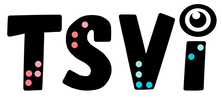- Home
-
Learn
- History of VI >
- Legislation & Laws >
- Vision Professionals >
-
VI Program Resources
>
- Program Printables
- Itinerant Teaching Tips
- Year at a Glance
- VI Program Handbook
- Caseload Analysis
- Organization & Time Management
- Professional Development
- Teacher Standards
- Professional Ethics
- Awards & Recognition
- APH Scholar Program
- Professional Organizations
- Certification Organizations
- Dealing with Challenges
- Professional Publications >
- Relatable Books for All Ages >
- Family Resources >
- Plan
- Basics
-
Teach
- Teaching Strategies >
-
Compensatory Skills Instruction
>
-
Social Skills
>
-
Self Determination
>
- Body Image & Acceptance
- Making Personal Goals
- My Vision Presentation
- My Self-Description
- Create a Personal Data Sheet
- Disclosure Decision
- Disability Statement
- Requesting Help
- Fighting Fears
- My Circle of Support
- Personal Responsibility
- Advocate for Safe Enviroments
- Having Picture Taken
- Coping with Change
- Aging Eyes
- Physical Characteristics
- Political Activism
- Laws Regarding Persons with Disabilities
-
Sensory Efficiency
>
-
Independent Living
>
- Orientation & Mobility Instruction >
- Recreation & Leisure >
-
Career & Vocation
>
-
Grow
- Complete Set Bonus >
-
Recorded Presentations
>
- Webinar: Tips for Being a "Physically Fit" TVI
- Webinar: The Art of Teaching the ECC
- Webinar: Virtual & F2F Strategies
- Webinar: Foundations of Teaching the ECC in the Age of Virtual Instruction
- Webinar: Itinerant Teaching Strategies
- Webinar: Using Themes to Teach the ECC
- Webinar: Conducting a FVLMA
- Webinar: Selecting the Right AT
- Webinar: Developing SMARTER Goals
- Webinar: Determining Service Intensity Using the VISSIT
- Webinar: Activities to Teach the ECC
- Webinar: Accessible Content for BLVI
- Webinar: Accommodations for VI
- Webinar: MIMO Strategies & Activities
- Webinar: SIDPID Strategies & Activities
- Webinar: Standard Course of Study Strategies & Activities
- Webinar: Job Tasks for Job, Career & Life
- Shop
- Jobs
LensesBy: Carmen Willings
teachingvisuallyimpaired.com Reports should indicate what a student's uncorrected (without glasses) and corrected (with glasses) visual acuities are. If a student's vision can be corrected, even mildly, they will typically be prescribed glasses or contacts. Why were the glasses prescribed?It is important to know why the glasses have been prescribed. Correcting a refractive error (such as myopia or hyperopia) is only one of the reasons that these may be prescribed. Glasses may be prescribed with a prism for a muscle imbalance or they may be recommended to protect the eyes. If the glasses are prescribed for near, they should be removed for distance viewing and vice versa if recommended by the doctor (some students will be able to leave them on as it will not have a significant impact). Glasses that are prescribed for myopia, or nearsightedness, will have a minus lens. Glasses prescribed for hyperopia will have a plus lens.
Types of LensesThe type of lenses that are prescribed can tell you a lot about the student's eye condition. The stronger the lens, the more significant the uncorrected vision. Keep in mind that even if a student is prescribed glasses, it doesn't necessarily mean that the student's vision can be fully corrected. This is because glasses cannot correct all types of visual impairments.
A convex, or plus lensA convex lens bulges outward, converges light rays and increases the size of an image being viewed. A plus lens directs light rays entering the eye so they focus on the retina instead of behind the retina as convex lenses correct hyperopia, a condition in which the eye is underpowered. Lens power that is greater than +12D could mean that the student has no crystalline lens (due to cataract surgery or aphakia) or the student has extreme farsightedness.
A concave, or minus lensA concave lens bulges inward, diverges light rays and decreases the size of the image received or can be used to converge light rays so that they focus on the retina, rather than in front of it. A very strong minus lens indicates extreme nearsightedness, also referred to as high myopia.
Plano lensesA plano lens does not bulge inward or outward and is not for correction in eyeglasses. A student may be prescribed plano lenses if they have no vision in one eye and the lens is used to "balance" the prescription for the other eye. It may also be used for cosmetic reasons or for safety reasons.
Prism LensesPrism lenses are often prescribed for persons who have strabismus for the purpose of redirecting the rays of light entering the eye. Prisms may also be used for persons with visual field neglect to cue the person that additional information exists in the neglected field.
Other Terms...
Sample Eyeglasses Prescription
All About VisionGary Heiting, OD has written a great article for All About Vision entitled "How to Read Your Eyeglass Prescription." This information can be very helpful when interpreting the eye report!
|
History of Visual Impairments
Professional Practice
Vision Professionals
Professionalism
Teacher Resources
Professional Publications
VI Book Resources
Family Resources
VI Referrals
Medical vision exams
visual diagnosis
fvlma
|
|
Teaching Students with Visual Impairments LLC
All Rights Reserved |
- Home
-
Learn
- History of VI >
- Legislation & Laws >
- Vision Professionals >
-
VI Program Resources
>
- Program Printables
- Itinerant Teaching Tips
- Year at a Glance
- VI Program Handbook
- Caseload Analysis
- Organization & Time Management
- Professional Development
- Teacher Standards
- Professional Ethics
- Awards & Recognition
- APH Scholar Program
- Professional Organizations
- Certification Organizations
- Dealing with Challenges
- Professional Publications >
- Relatable Books for All Ages >
- Family Resources >
- Plan
- Basics
-
Teach
- Teaching Strategies >
-
Compensatory Skills Instruction
>
-
Social Skills
>
-
Self Determination
>
- Body Image & Acceptance
- Making Personal Goals
- My Vision Presentation
- My Self-Description
- Create a Personal Data Sheet
- Disclosure Decision
- Disability Statement
- Requesting Help
- Fighting Fears
- My Circle of Support
- Personal Responsibility
- Advocate for Safe Enviroments
- Having Picture Taken
- Coping with Change
- Aging Eyes
- Physical Characteristics
- Political Activism
- Laws Regarding Persons with Disabilities
-
Sensory Efficiency
>
-
Independent Living
>
- Orientation & Mobility Instruction >
- Recreation & Leisure >
-
Career & Vocation
>
-
Grow
- Complete Set Bonus >
-
Recorded Presentations
>
- Webinar: Tips for Being a "Physically Fit" TVI
- Webinar: The Art of Teaching the ECC
- Webinar: Virtual & F2F Strategies
- Webinar: Foundations of Teaching the ECC in the Age of Virtual Instruction
- Webinar: Itinerant Teaching Strategies
- Webinar: Using Themes to Teach the ECC
- Webinar: Conducting a FVLMA
- Webinar: Selecting the Right AT
- Webinar: Developing SMARTER Goals
- Webinar: Determining Service Intensity Using the VISSIT
- Webinar: Activities to Teach the ECC
- Webinar: Accessible Content for BLVI
- Webinar: Accommodations for VI
- Webinar: MIMO Strategies & Activities
- Webinar: SIDPID Strategies & Activities
- Webinar: Standard Course of Study Strategies & Activities
- Webinar: Job Tasks for Job, Career & Life
- Shop
- Jobs

